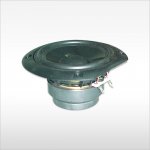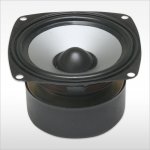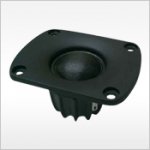As I mentioned before, I am in India and getting a minidsp itself will overshoot the budget. I would test the waters with a passive design before investing more into DIY.
If the A2 doesnot have active xo as Mr. dB suggested, isn't it possible to clone them using different drivers and amp? If someone can suggest the drivers (I am looking into the dayton 3/4 inch tweeter) I can try my hand at designing the
cabinet and xo.
On a separate note, how would a pair of Overnight Sensation kit stack up against A2 in terms of the sound?
If the A2 doesnot have active xo as Mr. dB suggested, isn't it possible to clone them using different drivers and amp? If someone can suggest the drivers (I am looking into the dayton 3/4 inch tweeter) I can try my hand at designing the
cabinet and xo.
On a separate note, how would a pair of Overnight Sensation kit stack up against A2 in terms of the sound?
The A2 uses a single channel amp and no active crossover, the XO is passive... The single (2-wire) cable connecting the left and right speakers are a dead giveaway.
The cost of drivers and box alone will be more than the Audioengine if you do it properly. The choice of drivers in India is restricted to Peerless and a few specific Fountek and Dayton models.
I doubt the latter will fit in your budget, but the former have respectable performance. I'd say you can easily beat the performance of the A2 (It's quite easy to even beat the A5 with Peerless India drivers), but the cost will end up being higher because you do not have the scale efficiencies of thousands of units being manufactured in China.
However there is the crossover. Regardless of whether you go active or passive, it has to be properly designed and that is not a beginners' project. You need at least to be able to take impedance and FR measurements if you are planning passive (with active, impedance measurement is not needed).
Frankly, it's a bit easier to do active design but there's more documentation on passive designs. The biggest advantage of active is the lack of insertion loss. Both are equally complex from a design perspective. DSP is suggested because it is much easier to achieve good results quite quickly with minimal guesswork.
Cost is a problem for DIY. It's not cheap, but you'll find that out in due course. It is possible to get better results than commercial, but below a certain threshold it is not possible to execute unless you do everything yourself. Taking it to a carpenter etc. will end up quite expensive.
The cost of drivers and box alone will be more than the Audioengine if you do it properly. The choice of drivers in India is restricted to Peerless and a few specific Fountek and Dayton models.
I doubt the latter will fit in your budget, but the former have respectable performance. I'd say you can easily beat the performance of the A2 (It's quite easy to even beat the A5 with Peerless India drivers), but the cost will end up being higher because you do not have the scale efficiencies of thousands of units being manufactured in China.
However there is the crossover. Regardless of whether you go active or passive, it has to be properly designed and that is not a beginners' project. You need at least to be able to take impedance and FR measurements if you are planning passive (with active, impedance measurement is not needed).
Frankly, it's a bit easier to do active design but there's more documentation on passive designs. The biggest advantage of active is the lack of insertion loss. Both are equally complex from a design perspective. DSP is suggested because it is much easier to achieve good results quite quickly with minimal guesswork.
Cost is a problem for DIY. It's not cheap, but you'll find that out in due course. It is possible to get better results than commercial, but below a certain threshold it is not possible to execute unless you do everything yourself. Taking it to a carpenter etc. will end up quite expensive.
Last edited:
Peerless India has enough interesting drivers to make decent
speakers. Some prefer active, others dsp and myself passive
circuits and I have a very good reason for that. Tons of caps
and miles of magnet wire.
For a starter these drivers are OK to work with. Try inserting the
numbers to simulate a box response around Fs and see for yourself
how big a box is acceptable.
Peerless M10NG(BM)-8-lg an 8 ohm 4 " bassmid,
Peerless SO8PESH-04 a 4 ohm 3" fullranger in a 1 litre sealed box,
Peerless TH T26S-X a nice dome tweeter
speakers. Some prefer active, others dsp and myself passive
circuits and I have a very good reason for that. Tons of caps
and miles of magnet wire.
For a starter these drivers are OK to work with. Try inserting the
numbers to simulate a box response around Fs and see for yourself
how big a box is acceptable.
Peerless M10NG(BM)-8-lg an 8 ohm 4 " bassmid,
Peerless SO8PESH-04 a 4 ohm 3" fullranger in a 1 litre sealed box,
Peerless TH T26S-X a nice dome tweeter
Attachments
- Status
- Not open for further replies.


